The Enneagram is a psychological system of personality types that describes nine different ways of thinking, feeling, and acting in the world. It is a popular tool for self-discovery, personal and professional development that helps people understand themselves and others better. It describes nine basic personality types, each with their own unique set of strengths, weaknesses, core motivations and fears that drives their behavior.
But did you know that there is more to the Enneagram than just nine types? In fact, each type has three subtypes or instinctual variants that add more depth and nuance to the personality.Dirk Cloete | Founder Integrative Enneagram Solutions
We will explore: what the Instincts are, the 27 Subtypes of the Enneagram, how they are used for personal and professional development, how they differ from the vanilla nine types, where they came from, and who Dr. Claudio Naranjo is, (the pioneer of bringing the Enneagram into modern psychology)

The Enneagram is based on a model of nine distinct personality types, each represented by a number from 1 to 9. Each type has a unique set of core beliefs, fears, motivations, passions, vices, and tendencies that shape their reactions, behavior and experiences.
Claudio Naranjo, a Chilean psychiatrist who has contributed to the development of the Enneagram of personality, describes vices as "subpersonalities" that are created in response to childhood wounds and become deeply ingrained habits. The nine Enneagram types each have a different associated vice: anger, pride, deceit, envy, avarice, fear, gluttony, lust, and self-forgetting. Vices are also called the passion of each type.
Another layer of subtlety emerges from the combination of the three instincts and the core Enneagram 9 Types. A new character structure is formed which we call the 27 Subtypes.
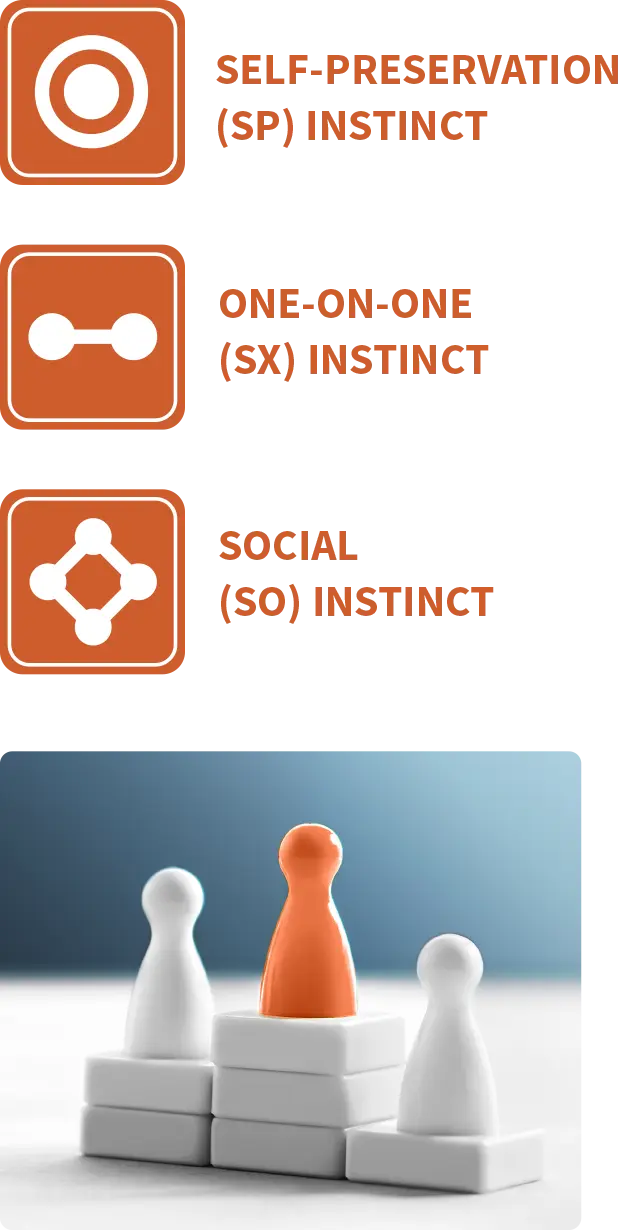
The instincts form a key concept within the Enneagram model. There are three clusters of biological drives and instincts: self-preservation, one-on-one bonding (or sexual), and social relating.
These primal forces are rooted in our physical body and are innate drives to survive, bond, and belong, influencing our behavior and decision-making processes. The evolution of these instincts ensured our survival and well-being as individuals and as a species. They are essential to human existence and shape how we relate to ourselves, others, and our environment.
These three basic survival strategies exist independently of personality and are at the heart of our life strategies. Although we may not always be aware of them, they strongly guide our fundamental way of being. If you imagine one of the nine Ennea types as a plate of food, instinct is the strategy you use to pick what order you eat the items on your plate. This is about what we believe is good for us or what we believe we need to get what we want and need in this world. While one instinct can dominate, the secondary has an influence, and the third is usually repressed.
Each instinct has a distinct focus, and while they are always present, one typically becomes dominant and is more easily accessed, used or overused than the others. The instinct that is repressed is also important for self-development.
Claudio Naranjo suggests that the dominant instinct can be a "weakness which looks like a strength" because it may be overdeveloped and thus appears to meet the needs associated with that instinct. However, when the instinct is imbalanced and influenced by a fixed personality, it may not be utilized properly and may not actually serve the overall interests of the individual.
These instincts were also studied by modern psychologists such as Sigmund Freud, Alfred Adler and Karen Horney, B.J Fogg, David Daniels and Enneagram subtypes or instincts authorities like Beatrice Chestnut, Uranio Paes, Katherine Fauvre, Mario Sikora, Don Riso and Russ Hudson.

We each have a self-preservation instinct, to preserve our body, its life and effective function.
This instinct, therefore,
focuses us on physical safety, physical survival, well-being, material security, financial security and comfort.
Anxiety or stress may combine with this instinct to drive us to conserve or hoard energy and resources in response to
demands from the environment or other people.
Also called: Preserving, Conservation, SP Instinct

We each have a drive to project ourselves into the environment, form alliances and extend ourselves through the
generations - either literally by passing on our DNA or more symbolically by passing on ideas, leaving a legacy.
This instinct is focused on the intensity of experiences and one-on-one relationships, also known as intimate
relationships or intense personal relationships, and drives us to actively seek out opportunities that promise strong
energetic connections with others. This instinct is sometimes refered to as the dominant Sexual instinct but this can
be confusing as it shouldn't always be seen in a sexual sense.
Also called: Transmitting, Sexual, Intimate, SX Instinct

We each have a social instinct to get along with others and form secure social bonds. This brings a focus on
interactions and relationships with community groups and a high 'social awareness' of norms and status levels in
social groups. This instinct focuses energy on working towards shared purpose or the greater good. See below,
how the Enneagram subtypes describe the differences we see in behavior, and character.
Also called: Navigating, Group, SO instinct
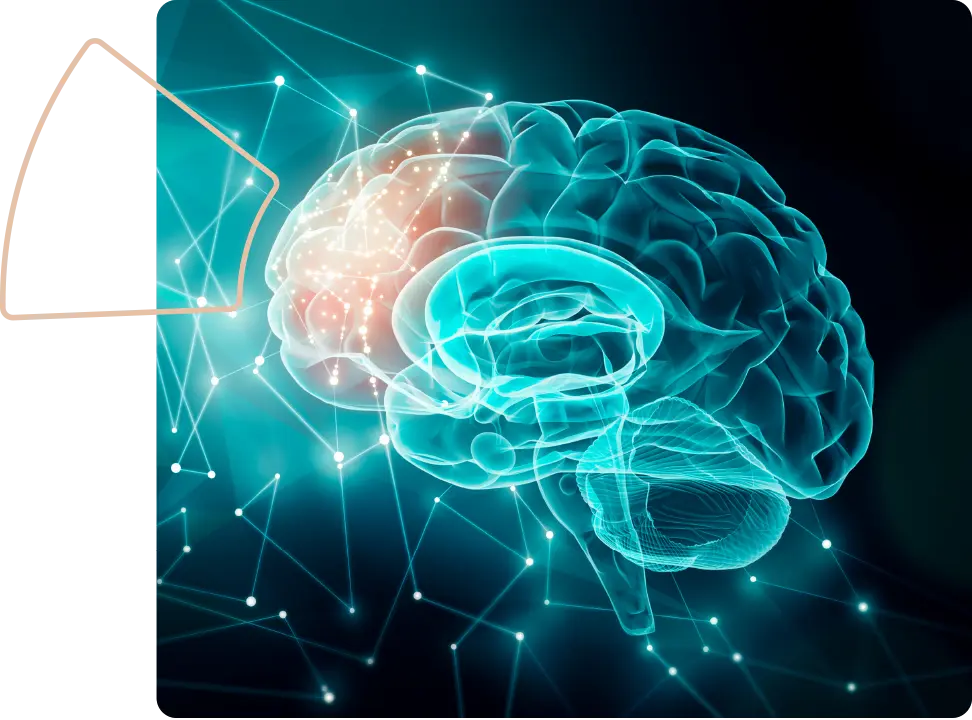
Recent advances in neuroscience research have confirmed the powerful and often-invisible ways in which these primal instincts 'show up' in modern society, such as how a perceived threat to social status can trigger a primal fight-or-flight response.
Neuroscience research suggests that each instinct is linked to different brain regions and systems that regulate our behavior, emotions, and cognition. For example, the self- preservation instinct is linked to the ventral medial prefrontal cortex (vmPFC), which helps us create an internal representation of ourselves and evaluate potential threats or rewards. The bonding instinct is linked to various neurotransmitter systems that modulate sexual desire, pleasure, and attachment. The social instinct is linked to the mirror neuron system (MNS), which allows us to understand and imitate others' actions and emotions
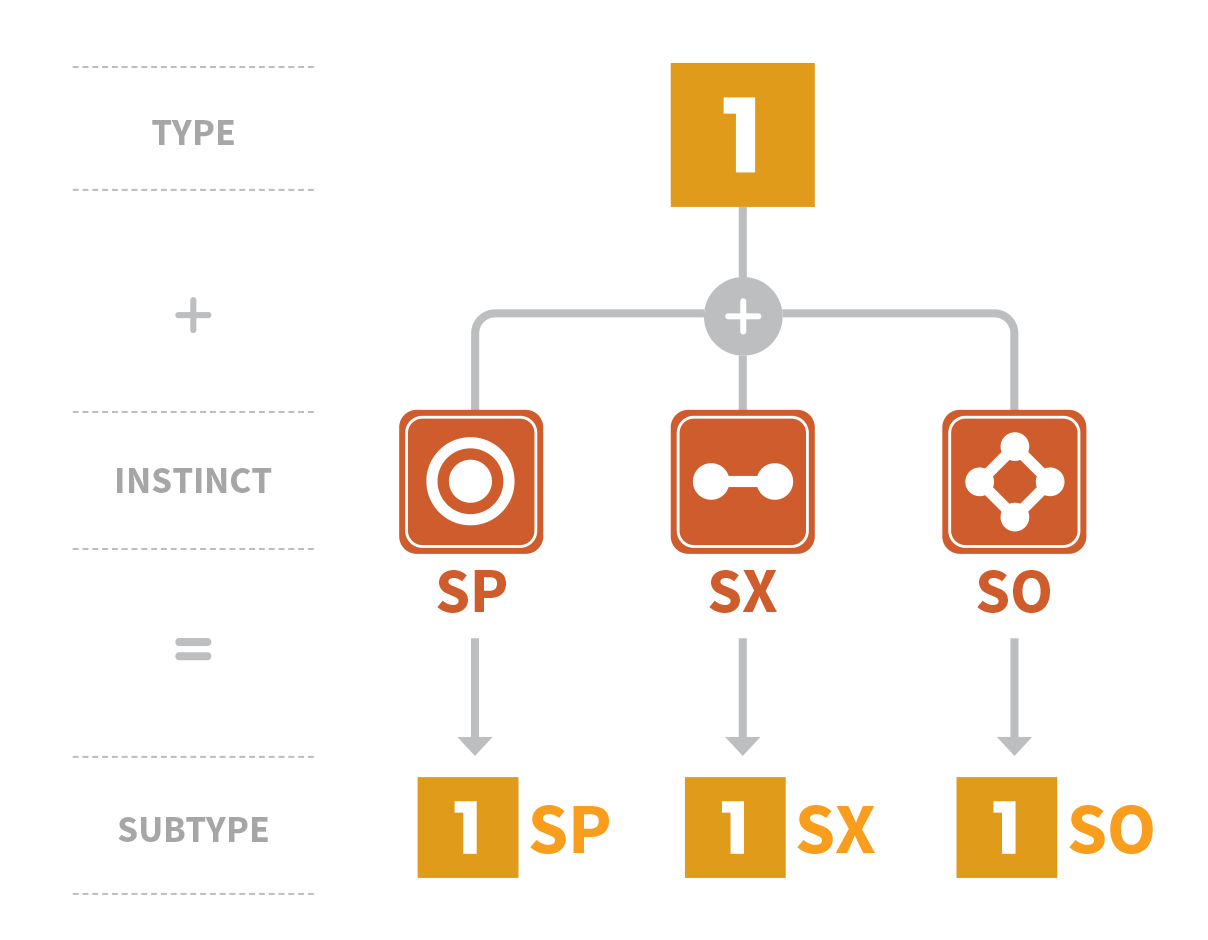
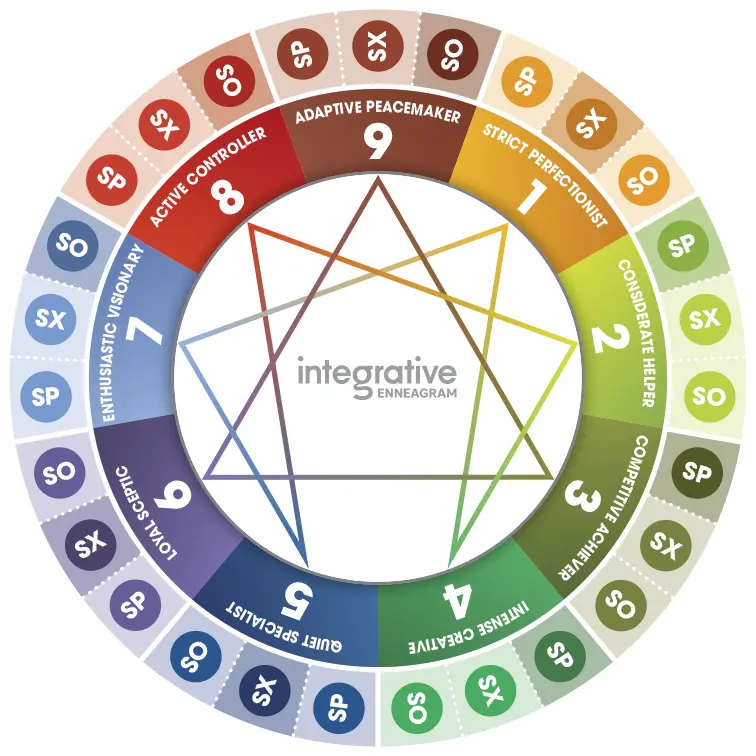
A subtype is the personal character that emerge when the personality core Enneagram 9 type's passion or vice fuse with the biological dominant instinct. These create 27 unique subtypes.
To find your subtype you can't superficially pick a dominant instinct and a dominant type. The Integrative Enneagram iEQ9 test was designed to determine this specific unique profile of an individual. The iEQ9 uses an accurate typing algorithm that can internally, intelligently adapt to the answers to speed up and narrow down from the 2000 questions required to only 175.
This unique model of the subtypes was pioneered by Claudio Naranjo who received the 27 Keywords from his teacher Oscar Ichazo. He developed it over 40 years of research into human behavior, psychometry and research in his SAT groups.
The subtypes show how we adapt to different situations and challenges based on our instinctual needs.
For example:It was once thought that the wings created subtypes, but modern research and countless interviews with people point to the 27 subtypes as the true key to understanding differences between people of the same type.

A Counter-Type is a subtype of the Enneagram that has a different behavioral expression from the other two subtypes of its type. The core motivation, core fear, vice and passion are the same, but the Counter-Type acts in a way that contrasts with its type's typical pattern. Sometimes it can even look like a different type altogether.
For example for type 1 the subtypes keep the anger in excepts for the SX 1 counter type, who express it more vehemently. Ennea type 2 subtypes can be quite helpful but the SP 2 counter-type is more reluctant to do things for others. Ennea type 3 subtypes want to show off their image, the SP 3 counter-type hides their achievements. The Enneagram type 4 subtypes are very expressive of their interior emotions, except where the SP 4 counter- type is more stoic. Ennea type 5 the subtypes are distant, the counter-type SX 5 is more romantic and emotional. Ennea type 6 for the angst the subtypes express the counter- type SX 6 can go against their fear and plunge into danger. Ennea type 7 subtypes ensures their own joy, the counter-type SO 7 can be more sacrificing for the benefit of others. The Enneagram 8 subtypes are rebellious to social norms the counter-type SO 8 want to fight for others. The Ennea type 9 subtypes can seek comfort and ease, the counter-type SO 9 is often a workaholic.
The counter type usually has a different way of coping with their core issue than the other two subtypes of their type.
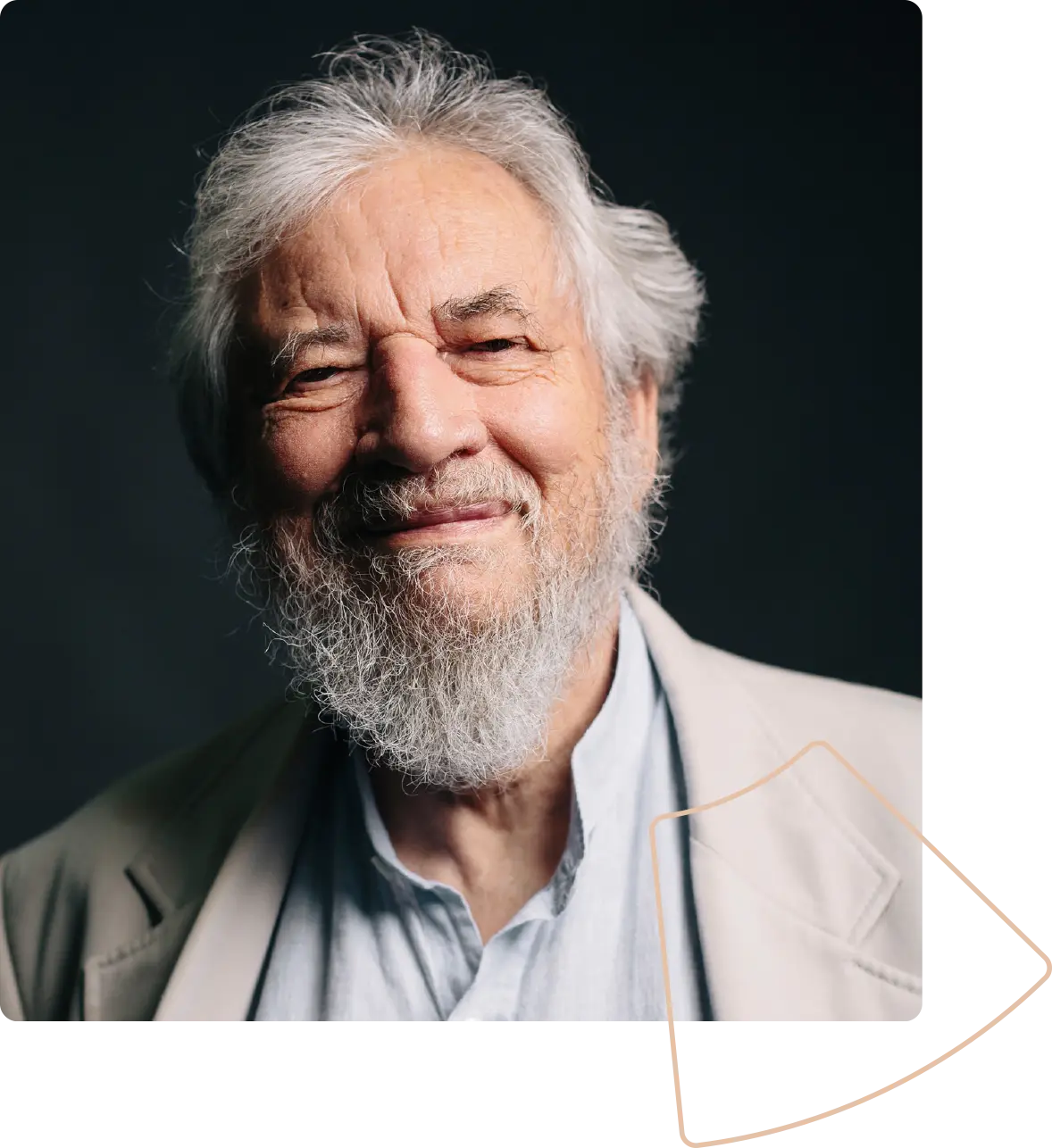
Dr. Claudio Naranjo was a psychiatrist, psychotherapist, and author who is considered one of the pioneers of bringing the Enneagram subtypes into modern psychology. Naranjo's work was influenced by his background in psychotherapy and psychometrics. He was trained in Gestalt therapy, which emphasizes awareness of one's feelings and sensations in the present moment. He also used objective tests such as the MMPI (Minnesota Multiphasic Personality Inventory) to measure personality traits and disorders. He integrated these methods with his knowledge of the Enneagram to create a comprehensive framework for understanding human behavior.
He learned about the Enneagram and its subtypes from Oscar Ichazo in Chile in 1970 before moving to California and teaching the Enneagram to groups of therapists, writers, artists, and spiritual seekers. He developed his own approach to using the Enneagram for psychotherapy and personal growth.
Naranjo's significant contributions to the Enneagram include linking the nine types to specific psychological disorders, elaborating on the subtypes of each type, and integrating the Enneagram with other psychological models and frameworks. He has impressive credentials as a medical doctor, psychiatrist, psychotherapist, author, educator, and researcher. Naranjo is also a founder of the Seekers After Truth Institute (SAT), which offers workshops and retreats on personal transformation and spiritual awakening.

The Enneagram is a powerful tool for growth, offering insights into our deepest fears, motivations, and desires. Within each of the nine Ennea types, there are three distinct subtypes, which provide even more nuance and complexity to our understanding of ourselves and others.
Knowing your subtype and using the development activities document in the iEQ9 can greatly focus the personal or spiritual growth path as well as support the journey for spiritual growth. As the VICE of our type can show up very differently than it is explained in the textbooks - it is our subtype character that will reveal to us our specific way of expressing the vice.
Additionally for us to bring balance to our basic Instincts is essential. It is often the work on the repressed Instinct that can be the most profound awakening to a balanced and happy life.

Understanding our dominant instinct and subtype can help us improve our self-awareness, professional growth, and interpersonal relationships. By recognizing how different people express their instincts differently, we can improve our communication and empathy with others. We can also use our subtype to enhance our personal and professional development by finding ways to balance our instincts and express them healthily.
By exploring the three subtypes within your Ennea type, you can gain a deeper understanding of your unique strengths, weaknesses, and blind spots. This self-awareness is a crucial first step towards personal and spiritual growth.

Understanding the subtypes of those around you can help you navigate and improve your relationships. For example, if you're in a relationship with someone who shares your Ennea type but has a different subtype, you can learn to appreciate and respect their unique perspective and needs.
By recognizing your dominant subtype and working to integrate the other two, you can heal past wounds and transform negative patterns. For example, if you're a Type Nine with a Self-Preservation subtype, you may tend to avoid conflict and prioritize comfort over growth. By integrating the Social and Sexual subtypes, you can learn to speak up for yourself and pursue your passions more boldly.
Each subtype has its own unique path from vice to virtues and ways to express their Essential gifts. By exploring your subtype's obstacles and tendencies, and seeking out practices that resonate with you, you can deepen your connection to the divine and your sense of purpose in the world.

The Integrative Enneagram Questionnaire is a dynamically adaptive intelligent assessment. It will take you about 30 minutes to complete and it will measure: Enneagram Profile, 27 Subtypes, Centers, Wings, Lines, Levels of Integration and 6 dimensions of Strain.
Get Your Type